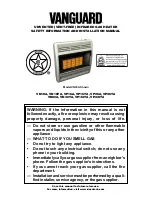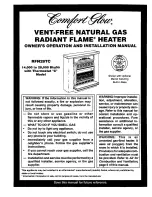
16
ENGLISH
USE AND MAINTENANCE
Cooling the supply air
The fluid circulating in the heat collection circuit remains
cool during hot summer days. The MLV Multi duct radiator
can be used to cool the supply air blown into room from
the ventilation unit.
• A limit value is set for the cooling thermostat (T3),
and cooling will be turned on when the outdoor
temperature exceeds this value. The pump will start
and the solenoid valve will be opened.
• A limit value is set for the safety thermostat (T1). The
pump will stop and the solenoid valve will close when
the supply air temperature falls below this value. This
prevents the entrance of excessively cool air into the
duct, as this could result in condensation.
MAINTENANCE
The duct radiator filter placed inside the outdoor air duct
should be replaced twice a year, for example each spring
and autumn. In addition, the condition of the filter should
be checked regularly and the filter should be cleaned as
required.
L
12
12
12
14
14
14
11
11
11
N
M
The safety thermostat T1
is used when supply air
temperature exceeds 16 °C.
The preheating thermostat
T2 is used when outdoor air
temperature is below -5 °C.
The cooling thermostat T3
is used when outdoor air
temperature exceeds 22 °C.
T1 Supply air safety
thermostat
supply < +16 °C
T3 Outdoor cooling
thermostat
outdoor < +22 °C
T2 Outdoor preheating
thermostat
outdoor > -5 °C
Regularly check, e.g. when changing the filter in the spring
and in the autumn, that the condensing water outlet in
the bottom pool are not clogged, and that there are no
leakages. To check this, pour some water into the bottom
pool. Clean as required.
USING THE UNIT
Preheating the outdoor air
Utilizing the heat collection circuit through the Vallox MLV
Multi duct radiator enables preheating the outdoor air
supplied to the ventilation unit during the heating season.
• A limit value is set for the heating thermostat (T2),
and preheating will be turned on when the outdoor
temperature falls below this value. The pump will start
and the solenoid valve will be opened.
• The limit value set for the heating thermostat (T2)
must be lower than the temperature of the fluid
coming from the heat collection circuit. This allows
the fluid of the system to be used to heat the outdoor
air.
In connection to cooling please note:
The flow of air that is cooler than the condensation point
(that is, the flow of surrounding air) in the supply air duct
can cause condensation on the exterior surface of the
duct. When the duct is located inside insulation in the attic
or in the intermediate floor, there is a high risk that the
insulation around the duct will get wet.
To prevent moisture damage, the duct must be protected
with condensate insulation. Only appropriate condensate
insulation will prevent the formation of condensing water
on the exterior surface of the duct when the duct radiator
is used for cooling.
The safety thermostat (T1) ensures that the air inside the
duct is never cold enough to cause moisture damage.
Condensing must be monitored during the heating season.
If, for example, moisture starts to collect at the supply air
valve, the set supply air temperature is too low and must
be adjusted upwards using the safety thermostat (T1).
Example of connecting the thermostats using Vallox thermostats (8087000)





































